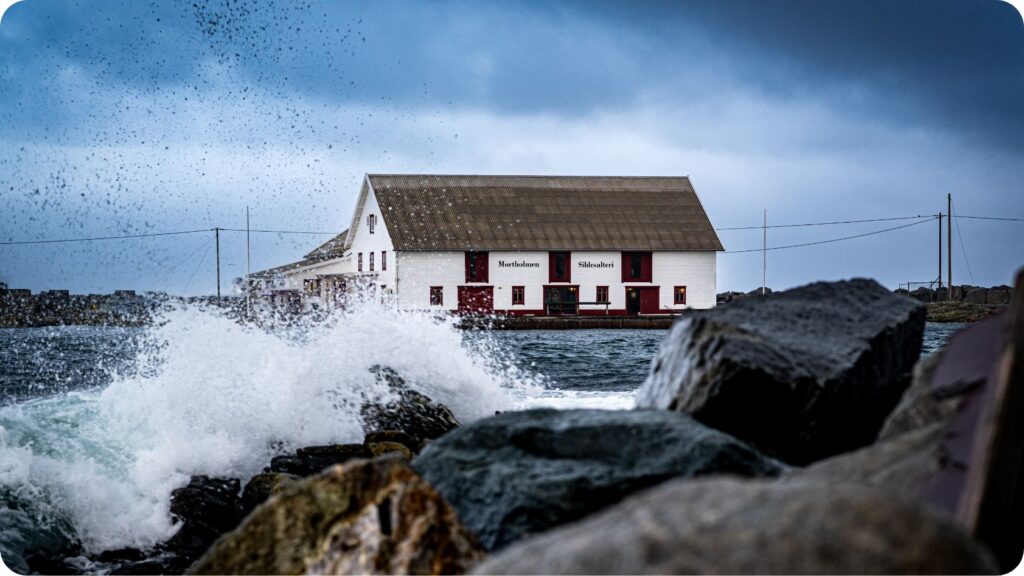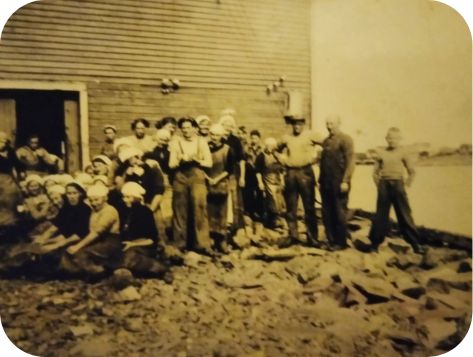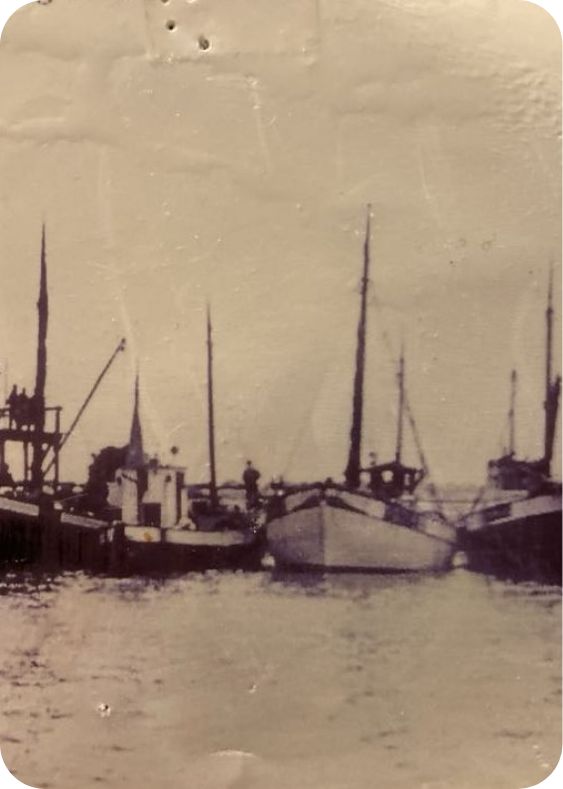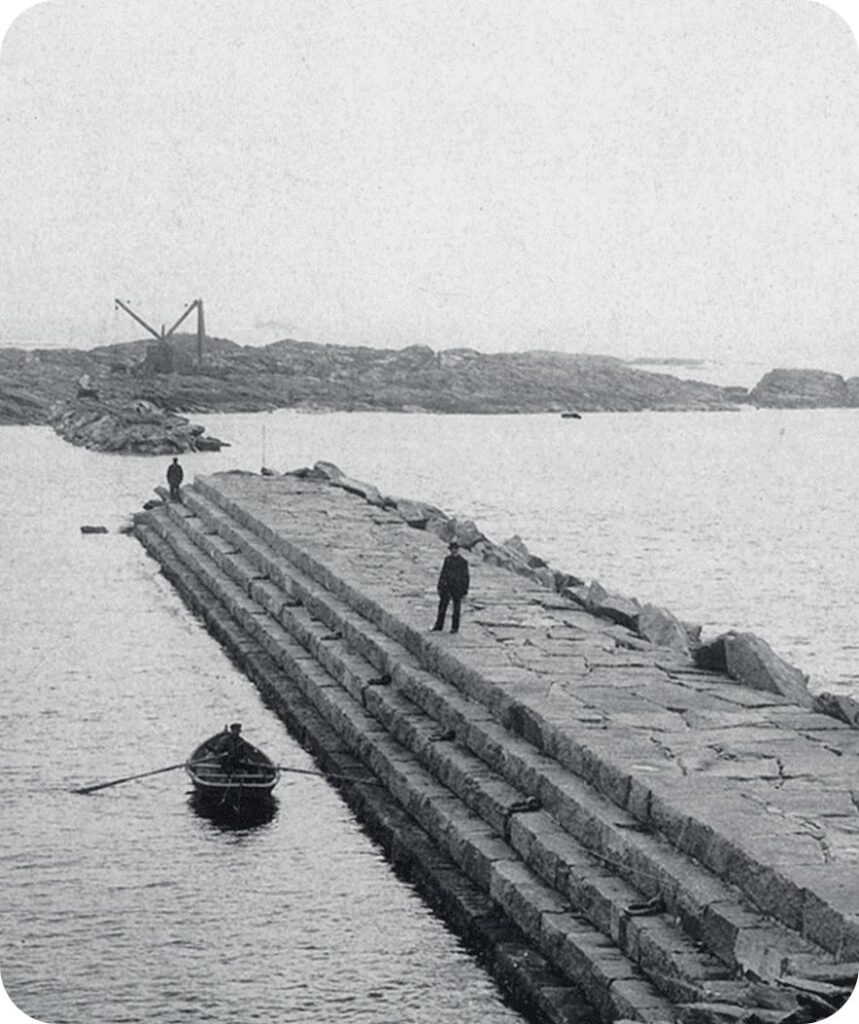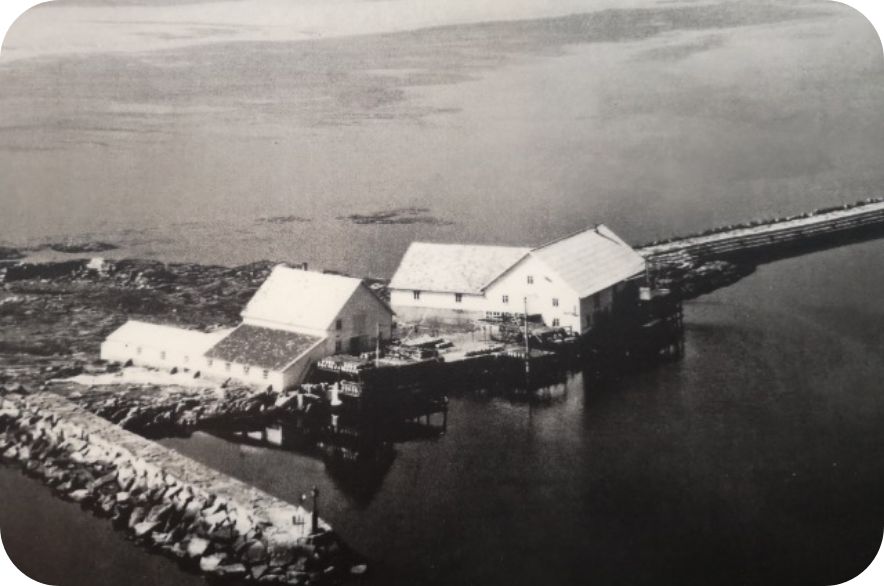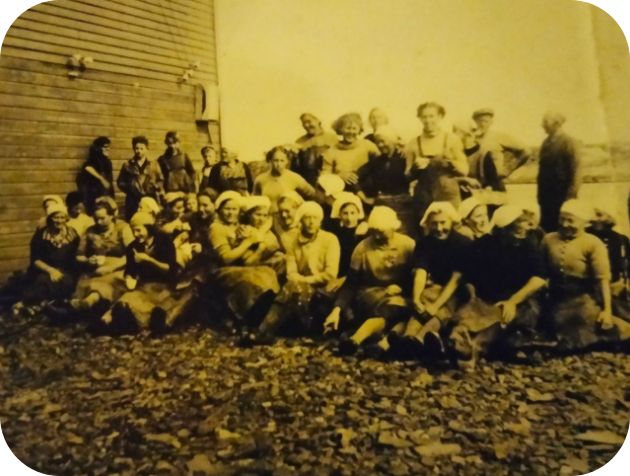From the mid-19th century onwards, fishing became increasingly lucrative. Due to the growing role and importance of the herring adventure, the quay at Åkra was built and completed in 1898. All trade, imports and exports took place in the port. Most of the herring brought ashore was salted and exported to other European countries.
Our Story
1898
1910
Due to the rapid development, a breakwater was built out to Mortholmen in 1910. At that time Mortholmen was just an empty island. This was to protect and offer a safe harbor for the fishing fleet. The stone used in the construction was blown out of Mortholmen with the help of dynamite.
1914-1918
During the First World War, herring became the primary food source for the Norwegian population. It was also a time of much export to other European countries. Sales went through the roof, and it was good times.
1918
Many see the potential in herring exports. Mortholmen Sildesalteri is built in 1918 by Knut Jakobsen and his family. At that time, two herring salting plants were actually built on the island, but only Mortholmen still exists today.
1931
Over time, the operation on Mortholmen has had its ups and downs, but in its heyday, the island was bustling with activity. Many of the residents from Åkra and Karmøy worked at the salting plant, and at its peak, the herring salting plant had a salting capacity of 720,000 liters. In addition to 120 tons of salted herring barrels. This was under the third owner of the salting plant – the Sjøen and Egge families, who took over in 1931.
1936
In 1936, Tønnes Sjøen passed away and the Egge family continued the business alone.
1939
When World War II breaks out, there are as many as 40 herring salting plants in the area. In the aftermath of the war, there was great demand, and high production at Mortholmen.
1950
Mortholmen Sildesalteri becomes the only remaining salting plant on Karmøy, and the largest surviving salting plant in the district. At this time, the salting plant was one of the largest workplaces in Åkrehamn, and contributed to Norway becoming the first in the world to establish a separate directorate responsible for the country’s fishing industry.
1960
At the end of the 1950s, the herring stock declined sharply. This led to a change at Mortholmen Sildesalteri, and in 1960 the salt works became the only one to switch from herring to mackerel.
1970
Production continued at Mortholmen until 1970. That’s when the last delivery was sent out the doors of the salt works.
1990
It was to take 20 years before production resumed at Mortholmen. In the 90’s, dried and smoked herring was produced on a hobby level at the plant. But in the early 2000s, this also took an end.
2015
John Ståle Egge, Ludvig Egge and Oddrun Østevik and their families begins to restore Mortholmen. Two of the herring tanks are converted into a cozy living room and a kitchen. The last herring tank is furnished with a stage and seating. Mortholmen becomes a place for concerts and events.
2020
Sig Hansen buys in. Today, he is the sole owner, with the goal of preserving the rich history contained within the weathered walls.
